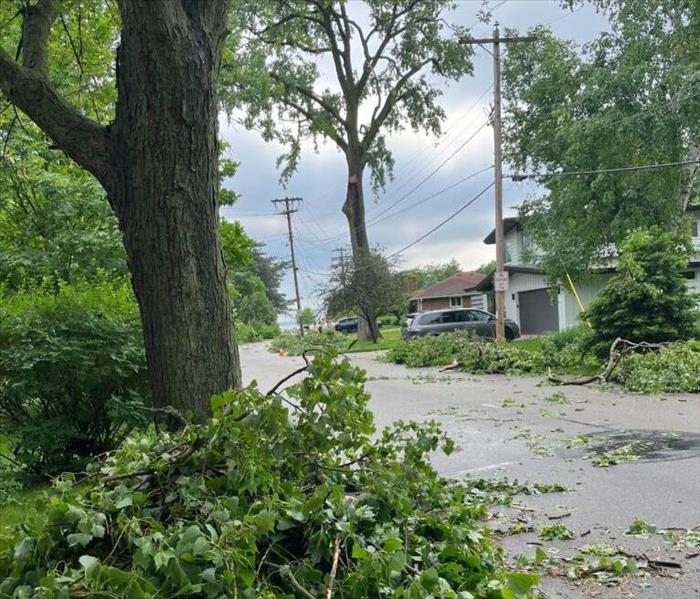What to do after a storm
7/1/2022 (Permalink)
Summer storms can be severe, and they often cause damage to roofs. If a storm has damaged your roof, it is important to take action to ensure that further damage does not occur.
Damage to your roof can be a massive inconvenience and even pose a serious safety risk to your home. If you live in an area prone to storms, it is essential to know what to do if your roof is damaged.
This article will outline some of the steps you should take in the aftermath of a storm to minimize damage and keep your home safe.
WHAT ARE SOME TYPES OF DAMAGE CAUSED BY STORMS?
A storm can cause many different types of damage. Here are some of the most common types of storm damage to roofs:
Wind damage
One of the most common types of storm damage is wind damage. High winds can cause shingles to be lifted off of your roof, exposing the underlying layers to the elements. This can lead to leaks and further damage over time. Hurricane-force winds can even cause structural damage to your roof.
During a storm, it is essential to keep an eye on the wind speeds in your area. If winds exceed 34 miles per hour, it is time to take action to protect your home.
Rain damage
Another common type of storm damage is rain damage. Heavy rains can cause leaks in your roof, leading to water damage in your home. In extreme cases, flooding can occur.
Keep an eye on the weather forecast before a storm hits. If there is a chance of heavy rains, take steps to protect your home such as by clearing gutters and downspouts and covering any exposed areas of your roof.
Hail damage
Another type of roof damage that storms can cause is hail damage. Hail is another common occurrence in thunderstorms. Hail can cause dents and cracks in your shingles, leading to leaks. In extreme cases, hail can even cause holes in your roof.
WHAT SHOULD YOU DO IF A STORM DAMAGES YOUR ROOF?
If your roof is damaged by a storm, here are some steps you should take to ensure that further damage doesn’t occur:
1. Inspect the damage from a distance
The first step is to inspect the damage and assess the extent of the repairs that need to be made. Here are some things to look for:
Missing or damaged shingles: Look for missing or damaged shingles. If any are missing or damaged, they will need to be replaced.
Leaks: Look for any leaks in your home. If you find any, they need to be fixed as soon as possible.
Inspect your gutters and downspouts: If they are damaged, they will need to be repaired or replaced.
We highly suggest viewing the damage from a distance because it could be dangerous. This is where the next step comes in handy.
2. Contact a roofing contractor
The next step is to call a roofing evaluation professional so that everything is handled properly from beginning to end. When you hire a professional company, things can be done correctly right out the gate.
It can be stressful when you try to deal with damage to your home by yourself because you may have an emotional attachment to the home. With a professional handling everything from storm damage evaluations to dealing with your insurance company, you can stress less.
3. Take preventive measures
Once your roof has been repaired, it is essential to take steps to prevent future damages. Here are some things you can do:
Install hurricane straps: Install hurricane straps on your roof if you live in an area prone to hurricanes. These straps help to secure your roof to your home, which can help to prevent it from being blown away in high winds.
Install a roof rake: A roof rake is a tool that you can use to remove snow and ice from your roof. This can help to prevent damage from melting snow and ice.
Trim trees: Trim them back if you have trees near your home. This will help prevent branches from falling on your roof and causing damage.
Take action now to protect your home from storm damage. By taking these steps, you can help to ensure that your home is safe and secure.






 24/7 Emergency Service
24/7 Emergency Service
